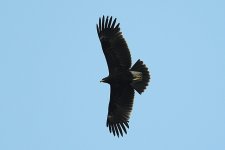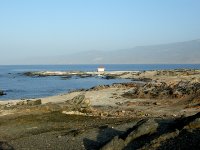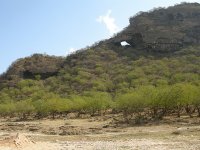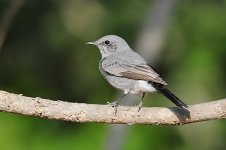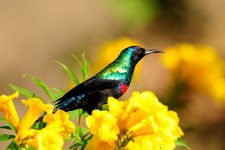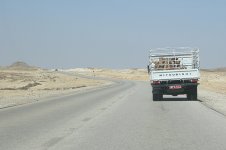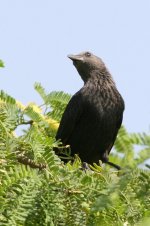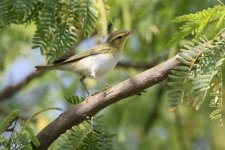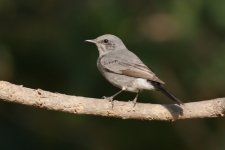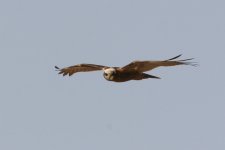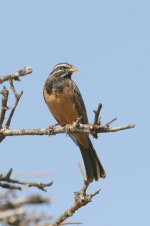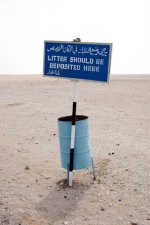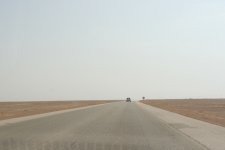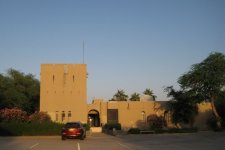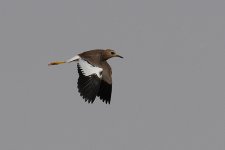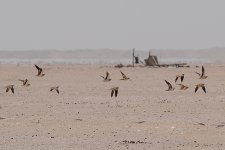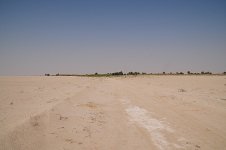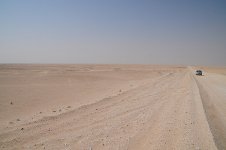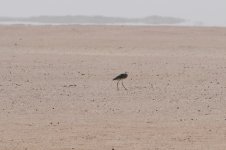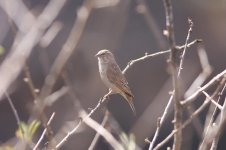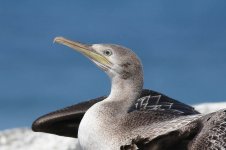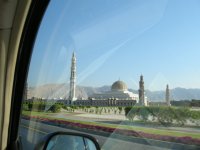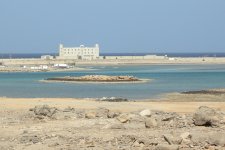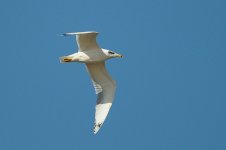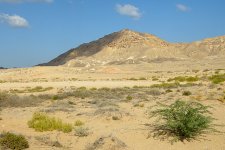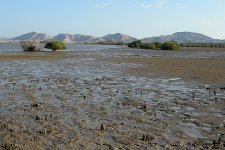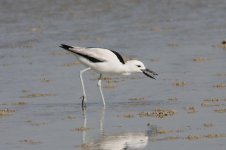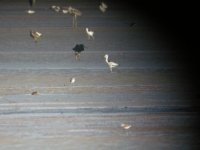Day 7, Into the Empty Quarter
Between the Muscat area, where we started our trip, and the Salalah area, lie around 1000km of desert. This is part of the Empty Quarter, one of the largest sand deserts in the world, and possibly
the most forbidding environment on earth. Nowadays, there is a perfectly good road that runs through the Oman part of the area. Although we had opted not to drive the length of the country, we were still keen to sample the desert experience so after some local birding and organisation we left Salalah and headed north. The road climbed steeply out through the Dhofar mountains, before flattening out. The top of the escarpment marks the edge of the influence of the monsoon that accounts for the relative greenery of Dhofar. Once we passed that point, vegetation became very thin on the ground. For a while the scenery retained some of the rugged character of the mountains, but that soon fell away and we were left with essentially flat, sandy desert either side of the road. With the road ahead disappearing in to the heat haze, and the near absence of scenery it was surprisingly difficult to concentrate on the road when driving.
After 50km we diverted off the main road along a rough track which eventually yielded views over Thumrayt Dump. This site proved to be not only an eyesore, but also virtually free of birds, with just half a dozen
Steppe Eagles perched around the rim. Back on the road, another 150km of nothing passed before our next turn-off, this time to a farm where, as at Sohar sun farms, irrigation has created an isolated patch of greenery that is a magnet for birds. On our visit these included a rather lost-looking
Squacco Heron, a nice selection of larks and pipits, a couple of
Ruff, a
Wood Sandpiper and the one and only
Starling of our trip.
Another 50km of nothing, and finally something, in the form of Qatbit motel, our accommodation for the night. The gardens here are watered, so are themselves a good birding site. Highlights of our quick check were half a dozen
Red-breasted Flycatchers, a few
Desert Lesser Whitethroats, a single
Lesser Whitethroat, a
Cuckoo, and a characterful male
Ménétries Warbler.
Below, livestock transport in the central desert
 :-O:t:
:-O:t:




